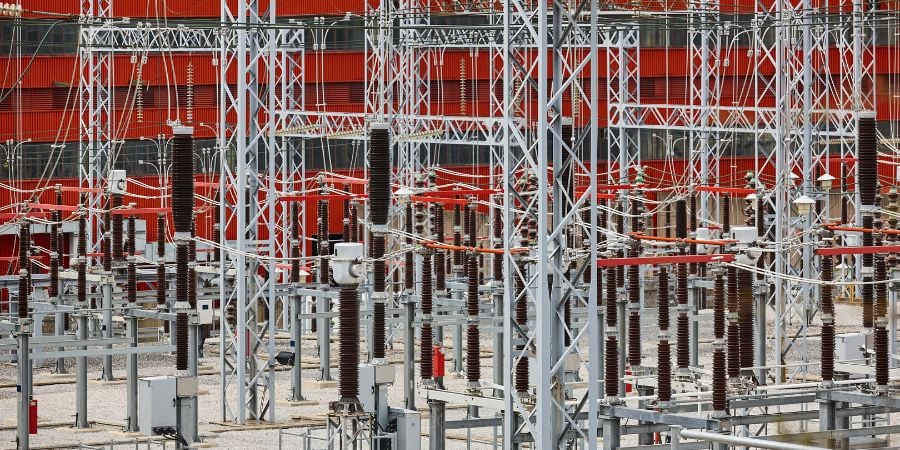Discover the Game-changing Power of Wholesale Electric for Suppliers
One aspect of the energy supply industry has the potential to revolutionize the way you operate and grow your business — selling wholesale electric. Businesses are continuously seeking opportunities to optimize their operations, reduce costs, and improve their bottom line. For energy suppliers in the industry, venturing into the wholesale electric market can be a game-changing strategy. In this blog, we will guide you through how prices are discovered, explain the role of technology, explore the challenges posed by the rapidly increasing supply of renewable energy, and give you a sense of how you can start selling wholesale power. So, if you are looking to pull your business away from the red and into the black, this is the perfect place to start.
Understanding the Dynamics of the Wholesale Energy Market
At its core, the wholesale energy market is a dynamic platform where bulk electricity is bought and sold between utility companies. Traditionally, this market has been dominated by major power utilities that generate electricity in large power plants and sell it to distributors. These distributors, in turn, supply electricity to consumers.
However, this traditional model is being reshaped with the rise of renewable energy and the deregulation of the electricity markets. An increasing number of independent and renewable energy producers have entered the scene, offering diverse energy sources, including wind, solar, and hydropower. Deregulation aims to break down monopolies, giving consumers the choice of their electricity supplier and providing them with better services at lower prices. It also stimulates competition among energy providers, driving innovation and efficiency.
A significant advantage of the wholesale energy market is that it allows for better price transparency. Market participants can view real-time price fluctuations driven by supply-demand dynamics, weather conditions, fuel costs, and more. The rise of wholesale electric has also led to enhanced reliability and efficient grid dispatch. Through real-time monitoring and advanced grid management technologies, ISOs can ensure the smooth operation of the electricity grid and quickly respond to any disruptions. As a result, end-users benefit from a more reliable electricity supply.
Facing Challenges in the Wholesale Electric Market
Despite the promising prospects of the wholesale energy market, it is not without its fair share of challenges. With the world transitioning towards cleaner energy sources, the wholesale market is witnessing a shift in operation and structure. One of the most significant challenges in today's wholesale market landscape is the rapid integration of renewable energy sources such as wind and solar power. These resources, known as intermittent generation, have near-zero marginal operating costs and are abundant in supply. However, they also present unique challenges due to their intermittent nature, meaning they only produce electricity under certain conditions.
One challenge for energy suppliers posed by these intermittent sources is the impact of renewable energy on electricity prices in the wholesale market. Since renewable energy has near-zero marginal operating costs, it can lead to periods of very low or even negative prices in the wholesale market, particularly during times of high renewable generation and low demand. This can pose financial risks to conventional power plants that have higher operating costs and may not be able to compete with renewables during these periods.
Based on mid-twentieth-century models, short-term energy and ancillary services markets are being tested by these changes. They must adapt to accommodate the supply variability and energy market price impacts associated with intermittent generation at scale. These markets must evolve their pricing and investment strategies to better reflect the new realities of electricity production and consumption. This involves updating market rules, introducing new products and services, and leveraging advanced analytics and forecasting tools to manage the variability of renewable energy better.
Exploring the Intricacies of the Wholesale Bidding Process
In the wholesale market, electricity prices are primarily determined through a bidding process that takes place in the day-ahead and real-time markets. Generators submit bids to sell a certain amount of electricity at a specific price for each hour of the day. These bids are then organized in ascending order based on price, often called creating the "merit order".
The market-clearing price is set at the price of the last, or highest-priced, bid needed to meet demand. Regardless of their bid prices, all successful bidders receive this market-clearing price. This process incentivizes generators to bid their true marginal cost, knowing that if they win, they will receive the market-clearing price, which should cover their costs and provide a profit. On the other side of this equation are the electricity retailers or "load-serving entities". These entities purchase the electricity from the wholesale market at the market-clearing price and then distribute it to end consumers.
How Technology is Shaping the Wholesale Energy Market
The advent of technology has significantly transformed the landscape of the wholesale energy market, with emerging technologies like demand response, distributed generation, and energy storage reshaping how electricity is produced, distributed, and consumed.
Demand Response
Demand response refers to the adjustment of electricity usage by end-use customers in response to changes in the price of electricity or incentives designed to generate lower electricity use. This can occur during periods of high wholesale market prices or when system reliability is in jeopardy. Advanced metering infrastructure and real-time pricing tools are key technologies for demand response. By creating two-way communication between consumers and electricity providers, these technologies allow consumers to dynamically adjust their electricity consumption, leading to more efficient use of resources and stability in the grid.
Distributed Generation
Distributed generation, the production of electricity at or near the point of consumption, is another innovation that is gaining traction and is transforming the traditional model of electricity generation. Rooftop solar panels, local wind turbines, and combined heat and power systems are all examples of distributed generation. The rise of distributed generation can alleviate grid congestion, reduce energy losses during transmission, and provide resilience against power outages. Advanced inverters, energy management systems, and grid-interactive technologies are essential for integrating distributed resources into the grid and ensuring their smooth operation.
Energy Storage
Energy storage technologies, such as batteries and pumped hydro storage, are becoming critical components in the wholesale market. They provide the grid with much-needed flexibility, allowing excess power to be stored when supply exceeds demand and released back into the grid when demand is higher than supply. This is particularly useful for managing the intermittency of renewable energy sources like wind and solar. Innovative technologies and business models are making energy storage more cost-effective and accessible, driving their widespread adoption in the electricity system.
Energy Software Solutions
Besides these, energy software solutions also play a crucial role in navigating the complexities of the wholesale market. They provide functionalities for energy trading, risk management, load forecasting, grid optimization, and more. These tools offer real-time data analytics, predictive modeling, and insights to help market participants make informed decisions and optimize their operations. The impact of such technologies is transforming the landscape of wholesale electric.
Strategies for Successful Selling Wholesale Electric
When energy suppliers sell wholesale energy, the scale of operations is often much larger than in retail energy markets. You are not just selling to a limited number of consumers but supplying power to large entities like utility companies or other electricity retailers. This larger scale can mean better pricing terms, as higher volumes typically provide an opportunity for lower per-unit costs.
However, selling wholesale is not simply about having a power source and connecting to the grid. It requires a sophisticated understanding of market mechanisms and real-time grid conditions. Prices in the wholesale market can be highly volatile, fluctuating based on supply and demand, weather patterns, fuel prices, and even policy changes. To navigate these dynamics, sellers need to have robust forecasting capabilities and a sound risk management strategy.
A major benefit of selling wholesale is the ability to leverage market price differences. You are selling at prices that fit your system and potentially buying at lower prices. For instance, if you are a utility with access to storage technologies, you can buy cheap electricity during periods of low demand and high supply, store it, and then sell it back to the grid when prices are high. This arbitrage strategy can significantly boost your profits.
Navigate the Wholesale Energy Market with Confidence
As energy suppliers in the ever-evolving industry, the wholesale electric market offers an innovative way for you to expand your business and increase profits. Leveraging technology and adapting to the challenges of this market can unlock new growth and revenue opportunities. To help you along the way, we encourage you to download our free resource, 8 Ways To Make Your Pricing System Keep You Out of the Red and Deep in the Black. This resource is designed to equip you with the knowledge and tools you need to make the most of the wholesale energy market today. Take this first step in transforming your business through the power of wholesale energy.
Share this
You May Also Like
These Related Stories
.png?width=900&height=450&name=Copy%20of%20Untitled%20(900%20%C3%97%20450%20px).png)
How Energy Supply Companies Leverage Automation to Work Smarter

Energize Profits: Hedging Strategies for Power Generation Suppliers



